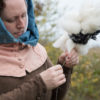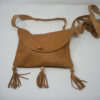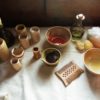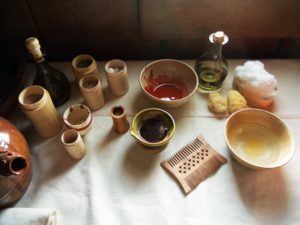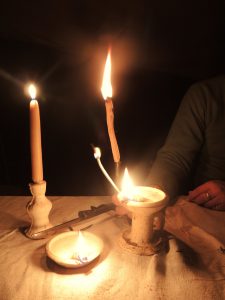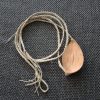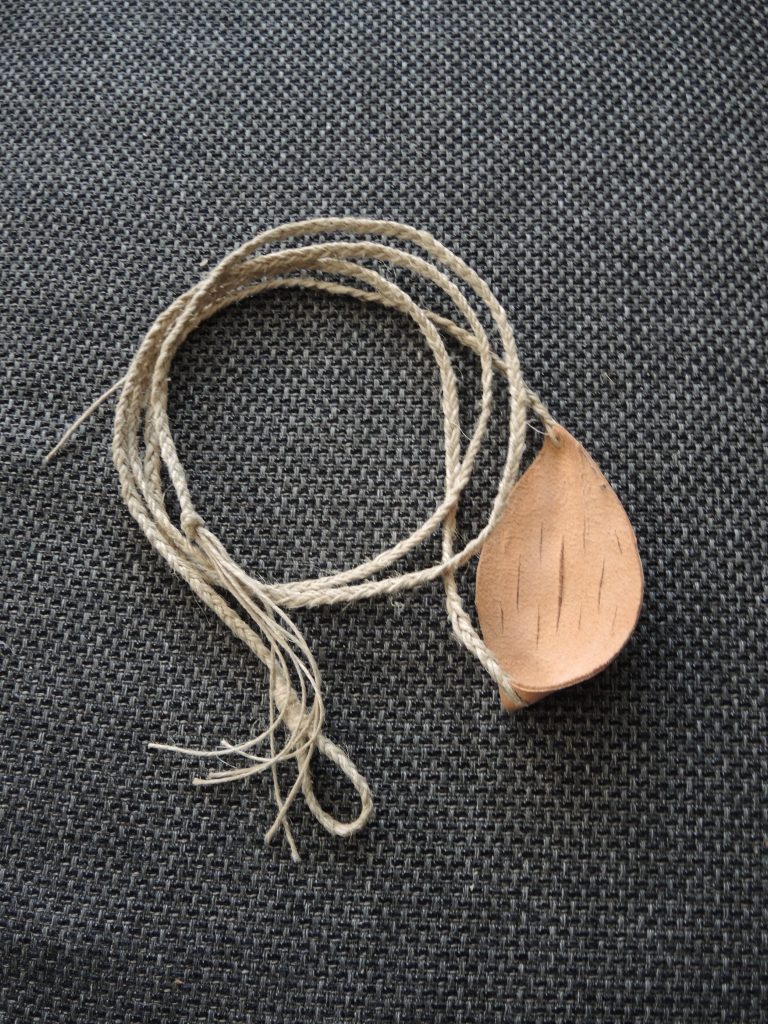Blog
Whenever I was spinning in the last years, I just had the wool flocks held in my hand. It was practical enough when going by metro or train, where I would usually spin. But I have not been entirely content with that for some time and during my research for …well not really an impression but some accessories that fall into the theme of shepherds and outdoor equipment, I started thinking about having my own made.
During my visit at the museum Schloss Gottorf in Schleswig however, I got the right hint. (more…)
Nowadays, I do not have as much luggage with me as I used to, when I was still visiting medieval markets as a non-participant. Lighter, Mobile phone, 2L of Mead, 300 EUR for overrated fast food, jewellery and nonsense, huge cloaks, flutes, beakers and provisions – that is what I used to pack.
Today, all I have with me when on an event, is a knife fitting into my leather purse.
But our camera, with which we document our events, needed a period solution to pack it, waterproof and away from visitor’s gazes. So I at last needed a small bag.
When you imagine a medieval man or woman, what do you see? Foul teeth? Greasy hair? Dirty, bumpy skin? Hairy armpits and sweat stench?
Well, for some of them, this might have been true. For some people today, this is still true. But medieval sources prove, that it could be and has been different for large parts of the population. Medieval people know far more than we think today.
In this article I want to talk about aspects of (female) beauty routine and cosmetics, as we find them in medieval sources (mainly the Trotula).
Enough is enough! Throw your iron Toilet-paper-roll-burner (yes, that totally is a thing), your lamp oil covered torches and your stupid Visby lanterns out the window! This is not your allday Hollywood-dungeon, we are recreating the civilisation of late medieval times!
Here we will show you some of the numerous possibilities to light your medieval house, tent or road in a historical way.
Slinging has followed me for a while now since I discovered the pages of Ottonenzeit about the topic.
I was fascinated by this “simple” technique. Although a woman would probably not have practiced slinging in medieval times, I really wanted to try it for myself, even if it may not be presentable in my all-day impression.
You can see slingshots in original pictures of shepherds or in use during the hunt ( here, a model with a stick attatched and here and here) and of course in pictures of David and Goliath (here and here and here and there and here). But also in military context. There are two types, one using only strings with a pocket attatched and one using an additional staff or stick which serves as an extension of the arm. The techniques for using them vary. You can find more on slinging pages on the web.
Here is my first reconstruction attempt. I used a pocket made of leather as can be seen in the Schleswig leather finds. The leather in the finds had been cut several times to allow bulging of the leather depending on the size of he stone. As strings I used linnen threads which I simply braided and tucked into a loop and a knot on the ends.
So, I’ll go find some nice pebbles in the Danube river and see if I am any talented :-)
Edit: Thanks a lot to Singa Lu for sending me his collection of original sources showing slingshots!!




